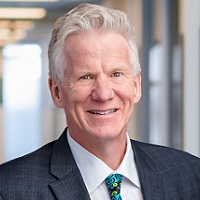 By Nick van Terheyden aka Dr Nick, Principal, ECG Management Consulting
By Nick van Terheyden aka Dr Nick, Principal, ECG Management Consulting
Twitter: @drnic1
Host of Healthcare Upside Down – #HCupsidedown
Health screenings are an important part of maintaining good health, especially as we get older. Treatment for most diseases is more likely to be successful if problems are detected early; the later we catch a disease, the harder it can be to treat or cure.
With breast cancer, symptoms typically don’t occur early, when the disease is most treatable. A routine mammogram can detect the presence of breast cancer and thus improve outcomes, but some 20% to 40% of women in the US are not up to date on their recommended screenings. Rates vary by patient group and are further hampered by racial divides and inequity.
Episode NOW on Demand
Despite some tremendous progress in the prevention, detection, and treatment of breast cancer, we still have plenty of opportunities to improve the availability and uptake for mammography.
Dr. Amy Patel has made it her mission to help women understand the importance of breast cancer screening, gain access to mammography, and put themselves on a path to a longer, healthier life. In the second of two episodes for Breast Care Awareness Month, Dr. Patel explains the need to customize screening programs based on geography and level of access. Below are a few excerpts.
Improving access to screening.
“We’ve made great advancements, and we should be very proud. But the work is far from over. In certain parts of the country, anywhere from 20% to 40% of patients are still not receiving the screening that they need. And this is not just applicable to mammography; with screening in general, we need to do a better job at reaching these patients. But part of it is just access. Unfortunately, we do not have federal legislation that’s sweeping [enough] to cover all types of breast imaging modalities that a patient may need. A lot of this legislation occurs at the state level.”
Educating patients.
“Access is a large part of it, but education should be discussed as well. It will take a multifactorial approach if we’re ever going to close the gap to breast care inequities in this country. We know that health literacy rates vary significantly when you look at urban versus rural, or even geographically. And I feel like a boots-on-the-ground approach is [also] important. I do a lot of work where I’m going out into rural communities, talking to members of the community at luncheons, at breast cancer awareness events, in churches—anywhere we can go to educate patients. Invariably, I have people come up to me saying, ‘I know I need a mammogram, but I can’t afford it.’ And we’re able to plug those patients in. So a lot of it is just the awareness, the educational aspect, and then identifying these patients to get them the access they need.”
The importance of risk stratification.
“If we can identify those who are above average risk, we’re more likely to detect cancers early, which can lead to an increased survival probability. It can be a very scary thing to face this—to be assessed and to know you’re above average risk or [that] you have a mutation. But I really try to implore patients to take charge of their breast health, to not be afraid, because it can be very empowering. If we know what our risk is, we can take the necessary precautions ahead of time. And that in and of itself can be incredibly empowering for patients.”
About the Show
The US spends more on healthcare per capita than any other country on the planet. So why don’t we have superior outcomes? Why haven’t the principles of capitalism prevailed? And why do American consumers have so much trouble accessing and paying for healthcare? Dive into these and other issues on Healthcare Upside/Down with ECG principal Dr. Nick van Terheyden and guest panelists as they discuss the upsides and downsides of healthcare in the US, and how to make the system work for everyone.
This article was originally published on the ECG Management Consulting blog and is republished here with permission.
